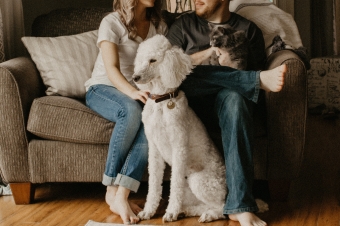Everyone knows that Carbon Monoxide (CO) gas is dangerous. Fewer would be able to identify why it is a threat to their home or be able to state steps for risk reduction when it comes to CO gas.
CO is a colorless, odourless, and tasteless gas that is toxic to humans and animals. It replaces oxygen in the blood. This makes it extremely dangerous. It also interferes with the transport of oxygen to our cells.
Symptoms of Carbon Monoxide poisoning include signs such as headache, nausea, vomiting, dizziness, fatigue, and weakness. It is unfortunate that the signs of carbon monoxide are not obvious. Often, affected families believe that they are victims of food poisoning.
Here are some important preventative steps to keep your home and family safe from Carbon Monoxide.
Recognize the sources of potential Carbon Monoxide release in your home
Anything that burns a fuel will produce Carbon Monoxide as a by-product. This includes furnaces, fireplaces, generators, gas appliances, and cars.
When these devices are properly maintained and vented, the odourless, colourless CO gas can be easily dispersed and removed from the home.
Follow these steps to ensure that CO gas is being properly vented from your home.
- When rough weather hits, check the vents for your dryer, stove, furnace and fireplace. This includes general obstruction and snow which might build up and block these important exits.
- Never run engines in closed areas. Even if you leave the garage door open, CO gas can quickly build up. This can be from running a car, a grill or stove, or even a generator in a closed area.
- Get regular maintenance check ups. Rely on your Applewood Air experts to install and maintain your fuel-burning devices with proper venting for each device. Once a year, have a qualified professional check your fuel-burning appliances, including your fireplace.
Be prepared with well-maintained CO alarms throughout the house
It is particularly important to install CO alarms if you have fuel-burning appliances, attached garage, or a fireplace in your home.
Your local fire department will be able to give you the specific laws and building codes for CO alarms in your home. The City of Oakville Fire Department outlines some key fire safety tips here.
You will want to have, at a minimum, at least one CO alarm on each level of your home.
They should be in the vicinity of each sleeping area.
Make sure that you maintain your CO alarms regularly. If the device runs on battery power, always keep a few spare batteries in case of a power outage.
If you want to be prepared for the possibilities of encountering CO gas or other gases in your home, check out our blog overview of what to do if you smell gas here.
Call us here at Applewood Air if you have questions about your complete home comfort and safety! We can be reached toll-free at 1-800-487-7307.





